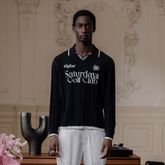Subculture Native Brands: The Shift Enabling Rapid Growth
Introduction
In recent years, the evolution of subculture native brands has witnessed a dramatic acceleration in growth cycles. Where it once took decades to build a robust brand identity through organic community engagement, today’s subculture native brands can achieve similar milestones within a fraction of the time. This rapid transformation is driven by digital technology, the proliferation of social media, strategic cross-sector collaborations, and the erosion of traditional geographic barriers.
Historical Perspective: The Long Road of Traditional Brand Building
Historically, subculture native brands emerged from subcultures and niche communities, requiring 10 to 20 years of gradual, organic growth to secure a market foothold. Early pioneers relied on word-of-mouth, localized events, and limited media exposure to build trust and authenticity. Studies from the late 20th century reveal that incremental brand loyalty was a product of sustained engagement—each new product launch and community event helped further solidify consumer relationships. Although this slow, iterative process yielded brands deeply embedded in cultural narratives, it also meant that expanding beyond local origins was a lengthy, challenging process.
Digital Transformation: Social Media as a Catalyst for Rapid Growth
The digital revolution has redefined the pace of brand development. Platforms such as Instagram, Twitter, TikTok, and Facebook have enabled subculture native brands to bypass traditional marketing gatekeepers and connect directly with a global audience. While traditional advertising once struggled to achieve engagement rates below 1%, modern social media campaigns frequently reach engagement rates of 3–5% or higher. This heightened visibility, combined with real-time analytics, allows brands to rapidly gauge consumer sentiment, fine-tune their messaging, and scale campaigns almost overnight—compressing the timeline from concept to cultural impact dramatically.
Collaborations and Brand Synergies: Leveraging Shared Audiences
One of the most compelling accelerators in modern brand growth is strategic collaboration—especially when subculture native brands team up with partners from entirely different sectors. A notable example is the collaboration between Supreme, a streetwear icon renowned for its rebellious ethos, and LVMH, a luxury conglomerate with a storied heritage in high-end fashion and craftsmanship. This unexpected partnership fused Supreme’s edgy, counter-culture image with LVMH’s luxury prestige, creating a striking juxtaposition that resonated with both streetwear enthusiasts and luxury consumers. The success of this collaboration can be attributed to its novelty, the merging of distinct consumer bases, and the extensive media buzz that amplified brand visibility across diverse markets.
Globalization and the Erosion of Geographic Barriers
Historically, subculture native brands were constrained by regional influences. Limited by physical stores and localized media, many early brands took decades to break out of their native markets. The internet, however, has dissolved these geographic barriers. Global e-commerce platforms and social media networks now allow brands to transcend borders almost instantaneously.
Broadening the Cultural Narrative: Beyond Traditional Examples
While legacy brands like Stussy, Vans, and Supreme laid the groundwork for subculture native branding, today’s landscape is witnessing the rapid rise of new players such as Off-White, A Bathing Ape (BAPE), and Kith, along with emerging labels from Asia and Europe. These recently launched brands are achieving rapid recognition and market penetration at a pace unprecedented in earlier eras. Recent data indicate that many of these brands secure key milestones in brand awareness within months rather than years—thanks largely to aggressive social media strategies and high-impact influencer partnerships. For instance, Off-White’s launch campaigns have amassed millions of online impressions within weeks through digital storytelling and high-profile collaborations. Similarly, BAPE’s innovative approach to digital marketing and culturally resonant messaging has enabled it to capture global youth culture swiftly. These examples underscore a fundamental shift: the integration of digital tools and creative cross-sector collaborations is not only accelerating growth but also redefining how quickly cultural narratives can be disseminated and embraced worldwide.
Khalhon's Challenge: Balancing Speed and Authenticity
Driven by these factors, Khalhon' has focused on leveraging social media to actively engage with its global market pioneers and communicate its brand identity, while also forging collaborations with various brands that offer capabilities Khalhon' might lack (Thanks to Payntr Golf, Fore.all, Vibecaddy, Ashergolf, Goldensoulgolf, and others). Despite the benefits of rapid market penetration, subculture native brands are inherently subject to lifecycle dynamics characterized by periods of growth and inevitable downturns. For a brand like Khalhon', which aspires to embody authentic cultural expression, recovery resilience during downturns is critical. In challenging periods, it is essential that Khalhon' continuously reaffirms its foundational cultural vision and core values. By consistently communicating its authentic ethos—even when short-term trends tempt rapid, surface-level pivots—the brand can preserve its unique identity and build long-term consumer trust. Ultimately, while rapid growth is an impressive achievement, the true measure of success lies in maintaining a balance: embracing innovative speed while ensuring that the brand’s essential cultural narrative endures through the ups and downs of its lifecycle.






